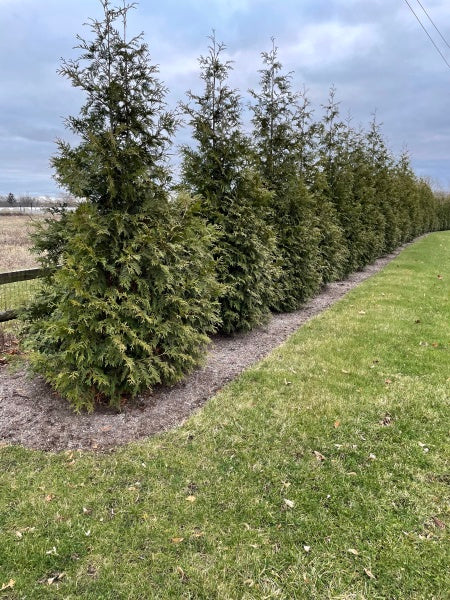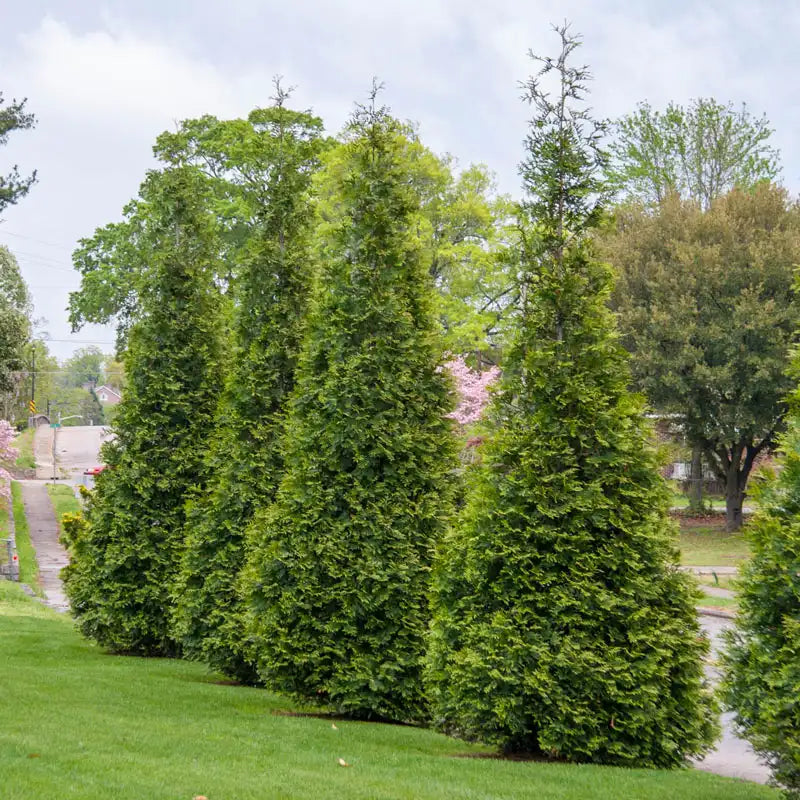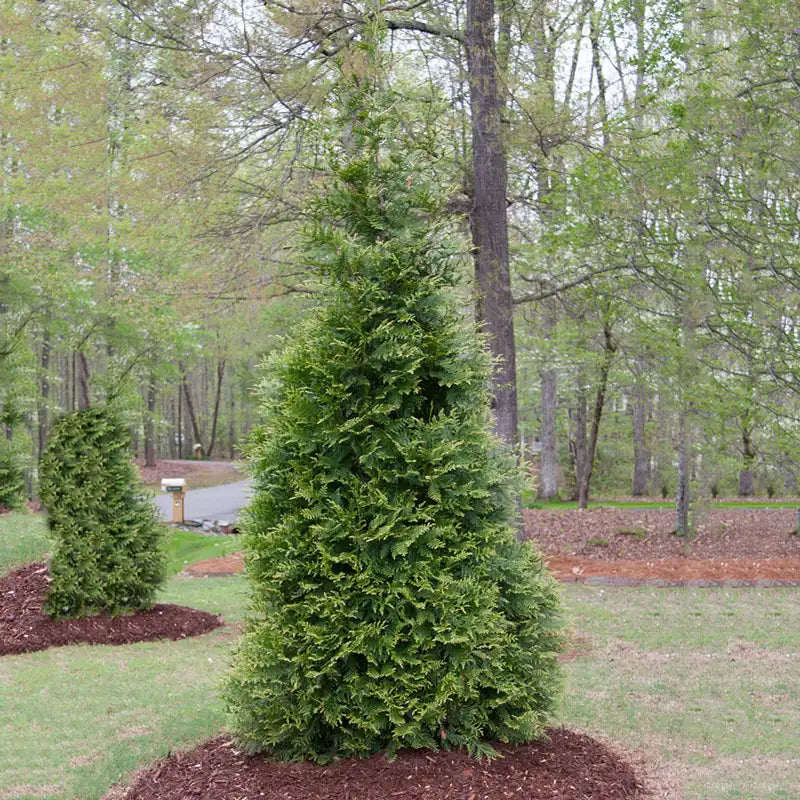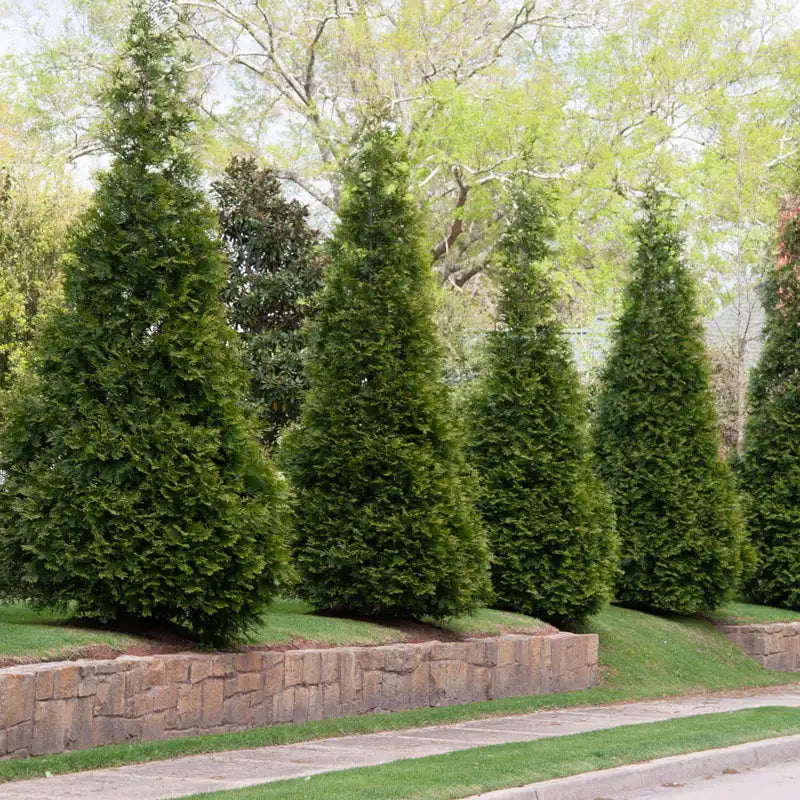1
/
of
4
Green Giant Arborvitae Hedge
Spicy Spring Perfume
92985
- Regular price
-
10 for
$152.99 - Regular price
-
$169.90 - Sale price
-
10 for
$152.99

Couldn't load pickup availability
- flowering dateEvergreen
- hardiness zone5-8
- height30 - 40 feet
- restricted statesAE AK AZ CA GU HI ID MT NV OR PR UT WA
- ship as1-2' , 1 GALLON
- sun exposureFull Sun
- Grows very fast and very tall
- Prunes easily for a uniform hedge
- Stays green all year round--no yellowing!
The green giant thuja is a hybrid discovered in Denmark--it is a powerhouse performer, growing vigorously to towering heights. There's no need to prune this evergreen, you can simply let it grow its full 30-40' for a windbreak. The green giant arborvitae does respond well to pruning, however, if you'd prefer something a little more uniform for hedging. The biggest benefit, other than its brilliant size, is that the lush, abundant foliage puts the 'green' in evergreen--it won't turn yellow or bronze in winter. This green giant arborvitae hedge variety is not very picky about soil, but it prefers well-drained if you have it. It's also extremely resilient to hotter humid temperatures, as well as frost and snow. Order your green giant thuja hedges, so you can have a beautiful, towering hedge that acts both as shade, a sound barrier, and privacy. Thuja plicata 'Green Giant' (syn T. 'Gigantioides')
Product Details
- botanical nameThuja plicata 'Green Giant' (syn T. 'Gigantioides')
- flowering dateEvergreen
- foliage typelustrous, medium evergreen sprays of thick foliage.
- formTree
- growth rateVigorous
- hardiness zone5-8
- height30 - 40 feet
- planting instructionsNone special.
- pruningNot required unless a different size and shape is desired. Prune in spring or late summer.
- restricted statesAE AK AZ CA GU HI ID MT NV OR PR UT WA
- shipping seasonSpring
- ship as1-2' , 1 GALLON
- soil requirementIt is not finicky but prefers a well drained soil.
- spacing5 - 15 feet
- spread10 - 15 feet
- sun exposureFull Sun
- winter careNone special.
Shipping Schedule
When will my order ship?
Plants will be shipped at the proper planting time for your area of the country during the shipping timeframes outlined below:
| 2024 Spring Shipping Schedule | |
|---|---|
| Zone | Select Hedges |
| 3A - 4A | 4/29/24 - 5/17/24 |
| 4B | 4/15/24 - 5/17/24 |
| 5A | 3/25/24 - 5/17/24 |
| 5B | 3/11/24 - 5/17/24 |
| 6A | 3/4/24 - 5/17/24 |
| 6B | 2/26/24 - 5/17/24 |
| 7A & 7B | 2/19/24 - 5/17/24 |
| 8A & 8B | 2/19/24 - 4/26/24 |
| 9A - 10B | 2/5/24 - 4/26/24 |
| Last Order Date | Zones 3A-7B: 5/13/24 Zones 8A-10B: 4/22/24 |
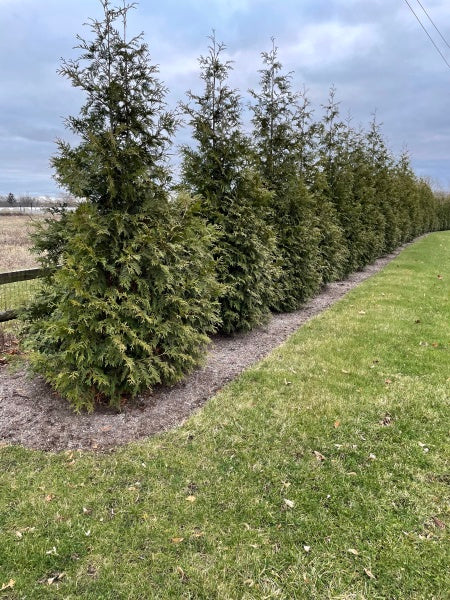
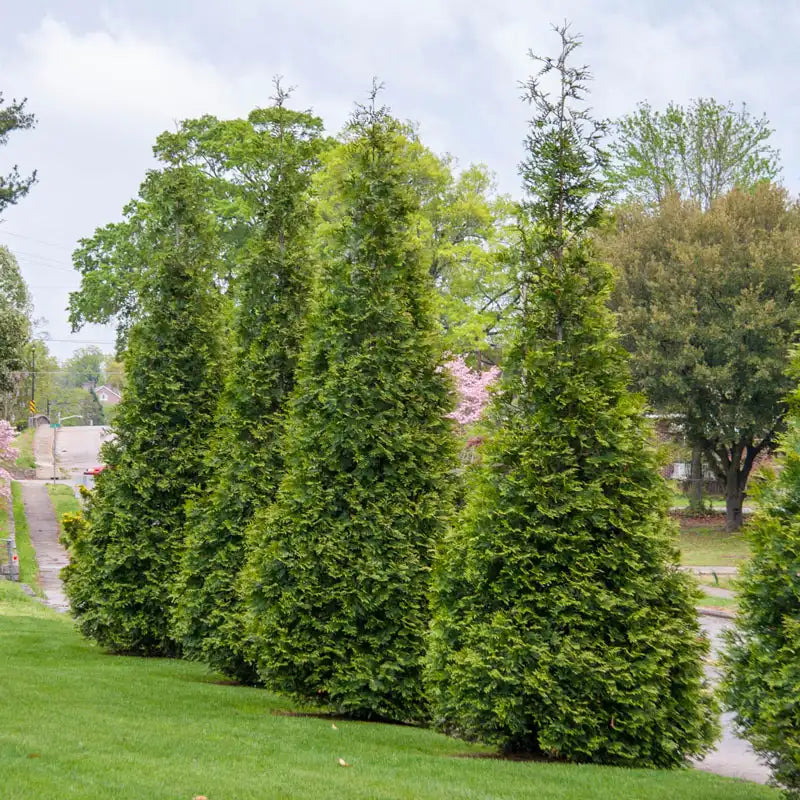
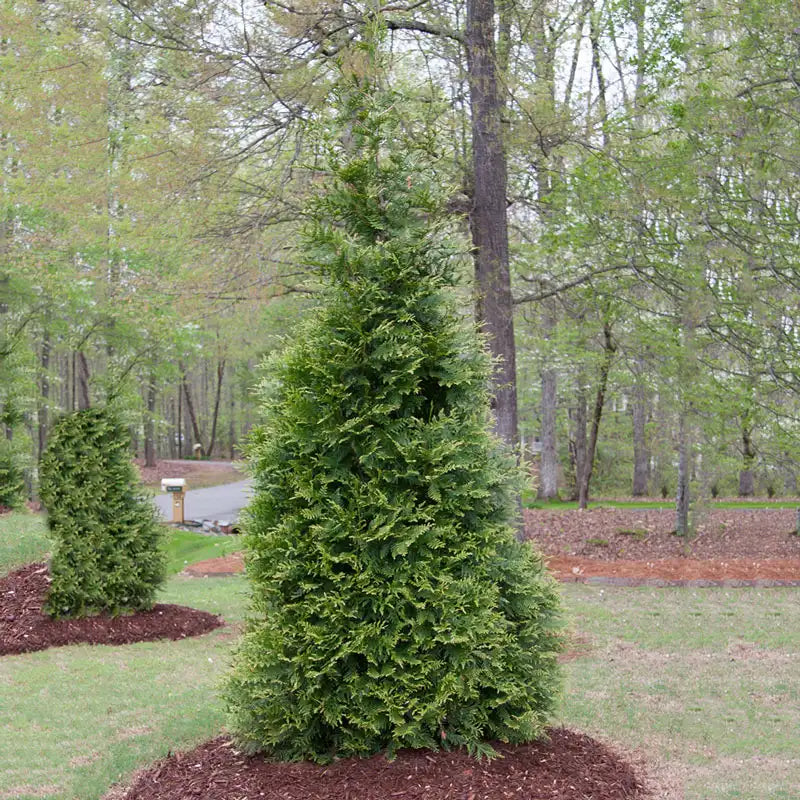
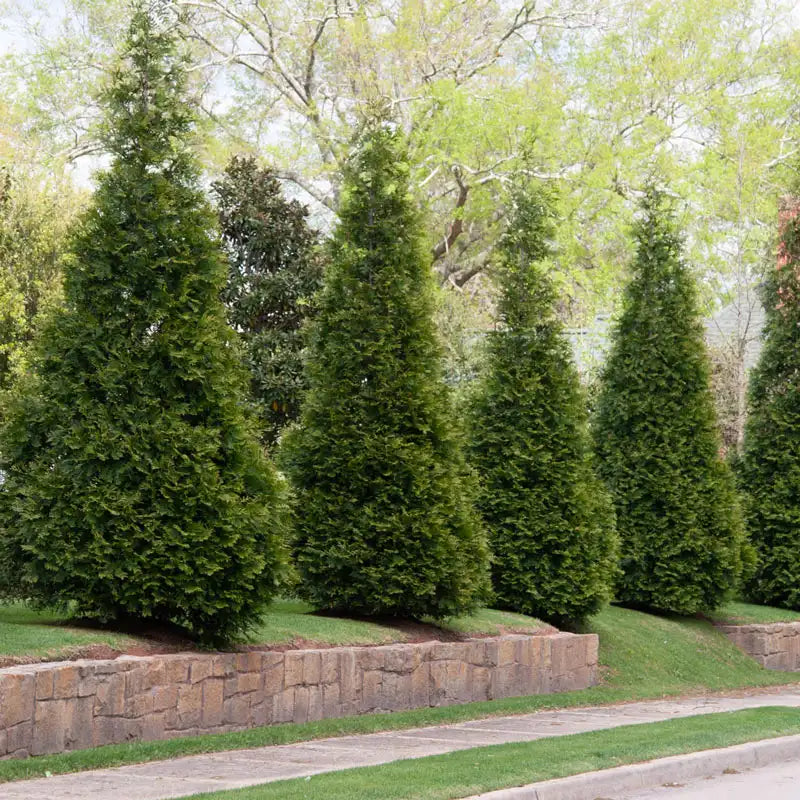

Green Giant Arborvitae Hedge
- Regular price
-
10 for
$152.99 - Regular price
-
$169.90 - Sale price
-
10 for
$152.99


